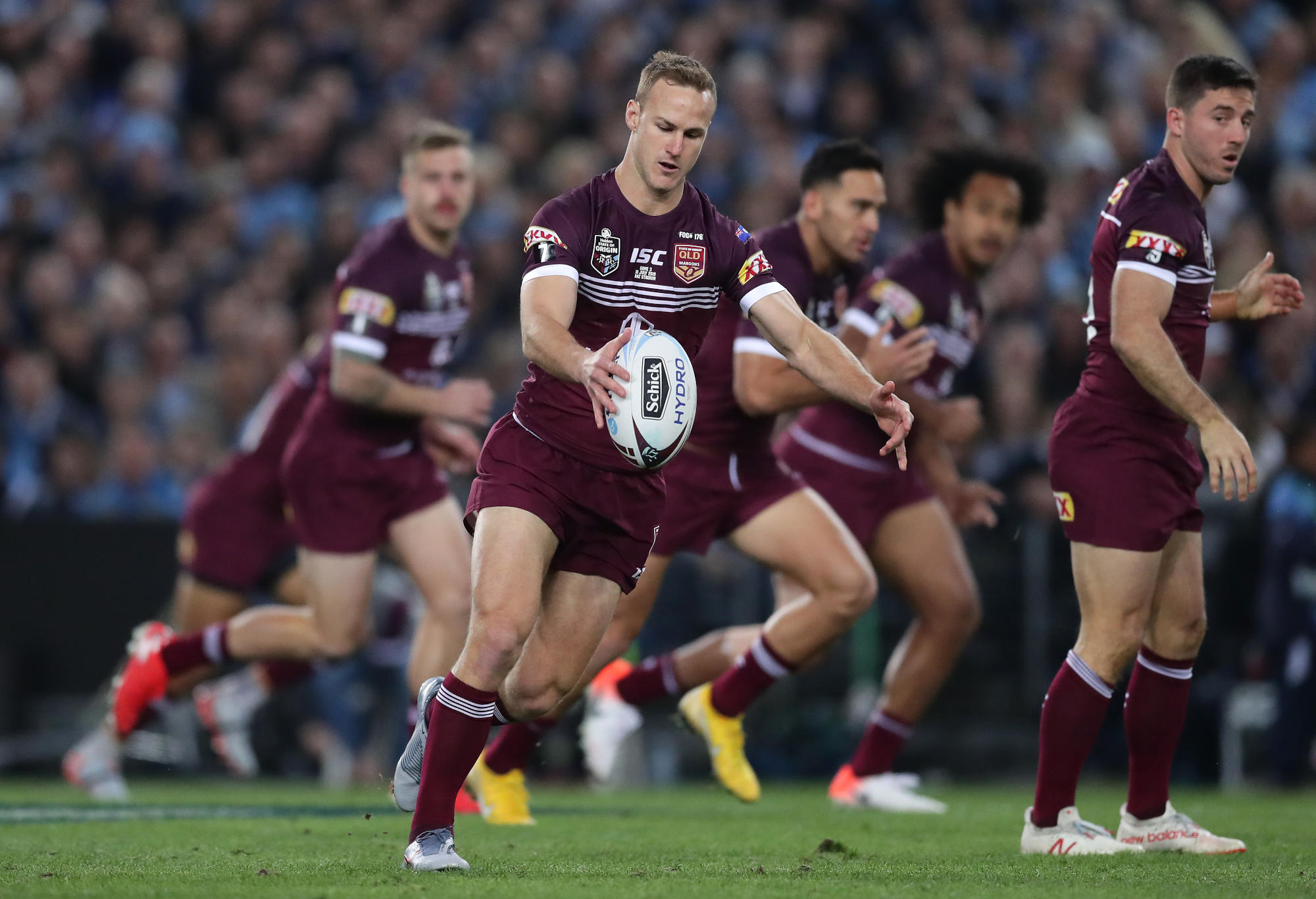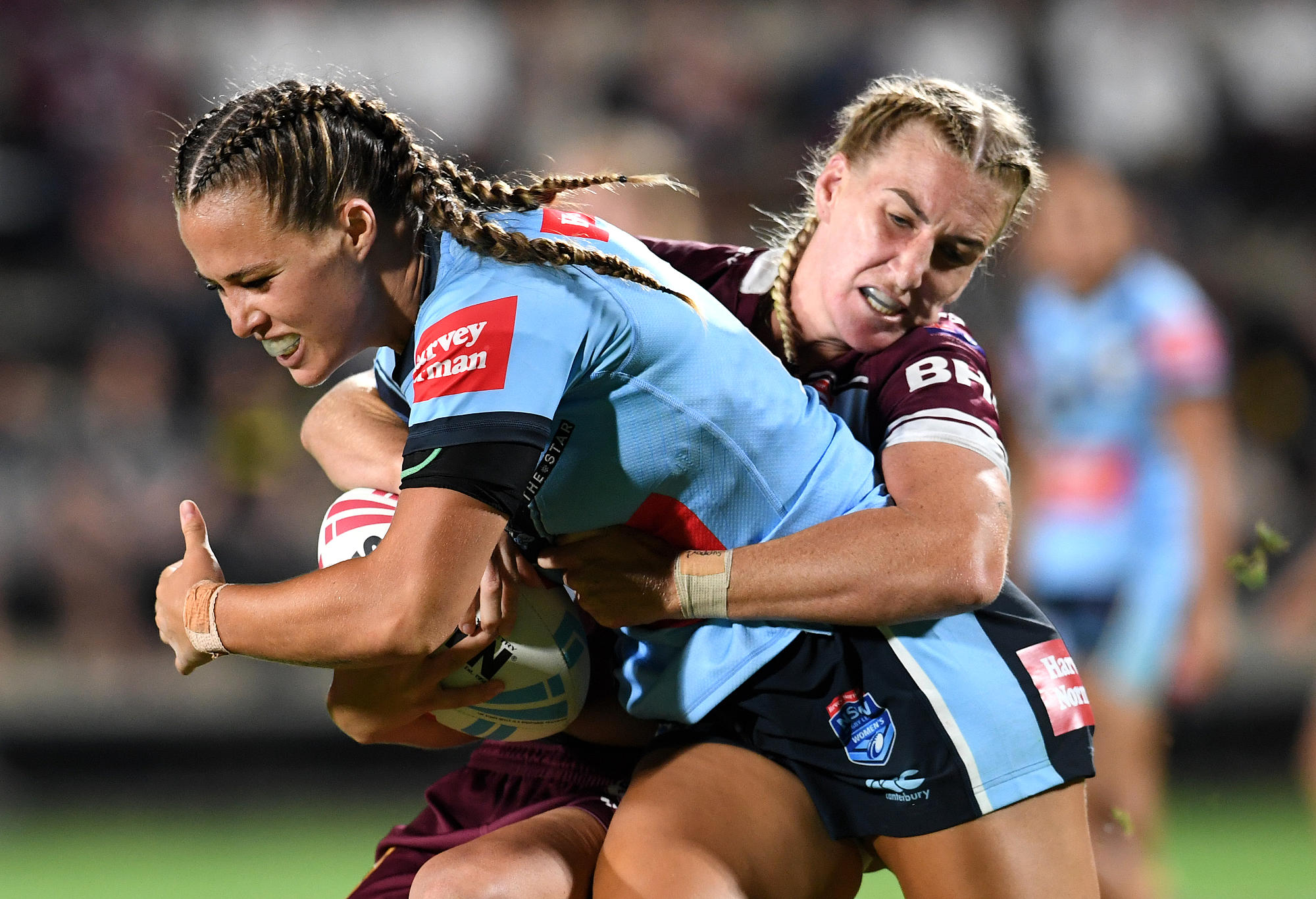The problem with the ongoing issue of how much should State of Origin players get paid is that there is no right answer. Certainly not one that will keep everyone happy.
Origin is Australian rugby league’s biggest cash cow and the sacrifices players make to put their bodies on the line for 80 of the most gruelling minutes of any sport on the planet is all but impossible to quantify.
Pre-pandemic the men’s Origin representatives were pocketing $30,000 a game. That was slashed in half during the past couple of years as the ARL Commission tried to mitigate the financial impact of COVID-19.
Like most aspects of rugby league, coming up with a solution to the question of how much do the players deserve for an Origin game is inextricably linked to the eternally complex, complicated and combative relationship between head office, the clubs and the players.
The RLPA wants the Origin pay to go back up, which is of course what the players should demand. You don’t get what you don’t ask for in rugby league.
For some players, even if the match fee goes back up to $30,000 an Origin, that’s actually a pay cut compared to their club salary.
Even if a player took part in every match over the 24 rounds of the regular season, plus all four finals and two pre-season trials (when most play one at the most), that’s 30 games a year. Therefore, anyone earning more than $900,000 a season – and there are a fair few of them around these days – is actually getting less than a standard match for Origin.
In a sport like cricket in Australia where the governing body enlists the top talent to centralised contracts, it is much easier for head office to dictate how much players receive per match.

(Photo by Ian Hitchcock/Getty Images)
The top players receive most of their salary via their contract which is then topped up by match fees on a sliding scale for Tests, one-dayers and T20 appearances.
Cricket Australia has the advantage of being able to direct its funds set aside for elite player salaries to a small group of the top cricketers and then use the rest of the money from its main income streams like TV rights and ticket sales to prop up other areas of the sport down to the grassroots.
In a sport like soccer in which the world’s best players earn eight-figure salaries, FIFA leaves it up to each nation to determine how much it pays its national representatives.
England, for example, reportedly paid their players £2,000 per appearance for the 2018 World Cup. This money is often donated to charity anyway. Players in many sports they are in it for the love of the game, not the money, and this is one of those cases where that holds true.
You could take the cynical view that it’s easy to say that when you earn six figures a week from your club contract but these players also don’t have to risk a serious injury derailing their career in the international arena.

Daly Cherry-Evans. (Photo by Matt King/Getty Images)
Origin players could easily make the argument that they deserve more money for the amount of effort they put into those three matches every year, risking significant injury that will affect their earning capacity from their main source of income – their NRL club.
But the ARL Commission has many more areas of the game in need of financial support – whenever any money is seemingly “wasted” on the already wealthy elite players, there is an outcry that the dollars would be better off being spent on the many other areas of the game in need of attention like juniors, country areas and women’s rugby league.
There’s also the issue of equal pay between the men’s and women’s Origin teams – another item in rugby league’s big bucket of unsolvable problems.
Interest in women’s Origin is growing at a great rate of knots. The investment is paying off and TV ratings for the June 24 clash at GIO Stadium will more than justify the increased wages that the players are now getting. There are several other high-profile men’s sports who would move heaven and earth to get the prime-time free-to-air billing that the Women’s Origin match has rapidly earned over the past few years.
While it will still be dwarfed by the men’s Origin series, like pretty much everything else in rugby league, that should not be used as a reason to not pay up to the women’s representatives of each state.
They already get paid a relative pittance to play in the NRLW so only the most churlish of dinosaurs would bemoan them getting a decent earn once a year from Origin. Thankfully, that will expand to a two-match series next year.

(Photo by Dan Peled/Getty Images)
The QRL has at least announced its women’s Origin players will this year receive the same amount – $15,000 – as the men. The NSWRL, which is badly in need of some good publicity after its recent battles with the ARL Commission over its boardroom governance, is paying its female Origin representatives around $8800 each.
For those who make the final squad, Queensland’s women’s players are paid their $15,000 for attending multiple camps in the lead-up to the game as well as the match. The NSWRL is boosting the pay of the women by paying ambassador fees to its players for promotional duties not just during the Origin period.
A NSWRL spokesperson said the match payment fees were set by the ARL Commission. “The NSWRL is committed to women’s rugby league across NSW and invests significant amounts of money across all levels of the women’s game, not just the elite level at State of Origin.
“The NSWRL would be totally supportive of the ARLC increasing match payments for women’s State of Origin players – subject to the capacity of the ARLC to do so – and ultimately to bring them in line with the payments for our men’s State of Origin players.”
Hopefully the NSWRL is able to come up with a solution soon to this discrepancy, otherwise women’s Origin will have its first Greg Inglis style NSW-born player coming up with a reason why they’re actually eligible for Queensland.
League has made great strides in sorting out the selection eligibility criteria in recent years but it will always be a murky area, nearly as hard as solving the riddle of how much an Origin player – male or female – should be paid.































































































